It really is as simple as this!

Confession time. Even as a seasoned food blogger of over 10 years, I used to walk right past whole pomegranates at the store and grab the little cups of arils instead.
You know the ones.
Convenient? Yes. Ridiculously expensive? Also yes.
But every time I looked at those big, mysterious, ruby-red fruits, I thought, “There’s no way I’ll pick a good one… and even if I do, how in the WORLD do I cut into it?”
Turns out I was totally overthinking it!
There are actually just 5 simple tricks that guarantee you pick a perfectly ripe and juicy pomegranate every single time. (And I even figured out a super simple way to cut into it without making a stained mess you can see it in my post on How to Cut a Pomegranate)
TL;DR: All the juicy details
- Sounds dense when tapped
- Deep red skin
- Slightly square shape (not perfectly round!)
- Heavy for its size
- Tight, firm skin
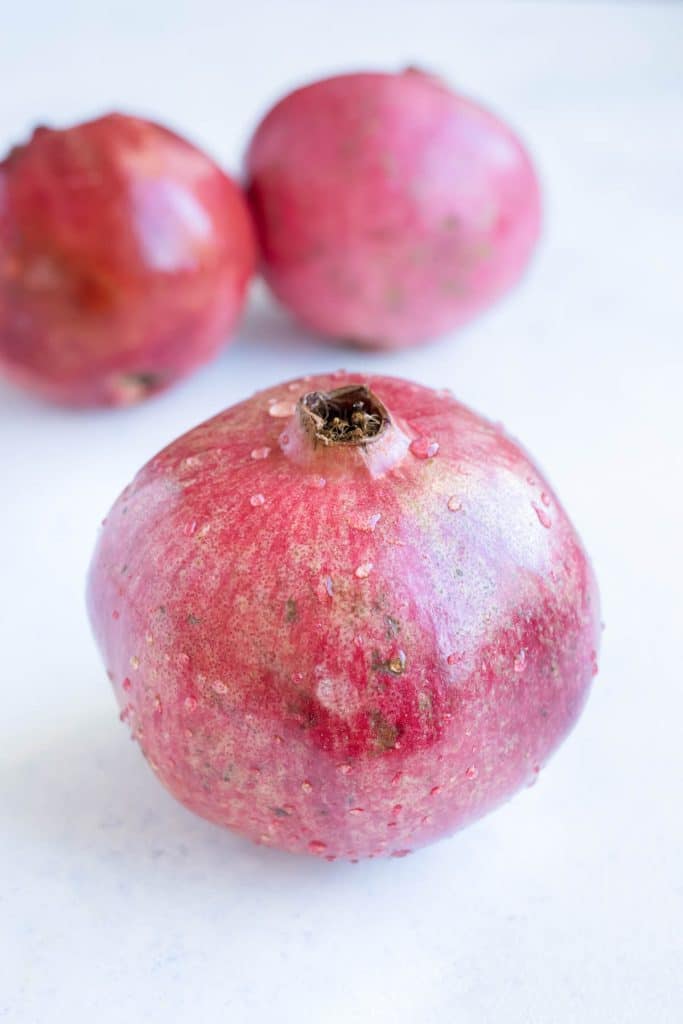
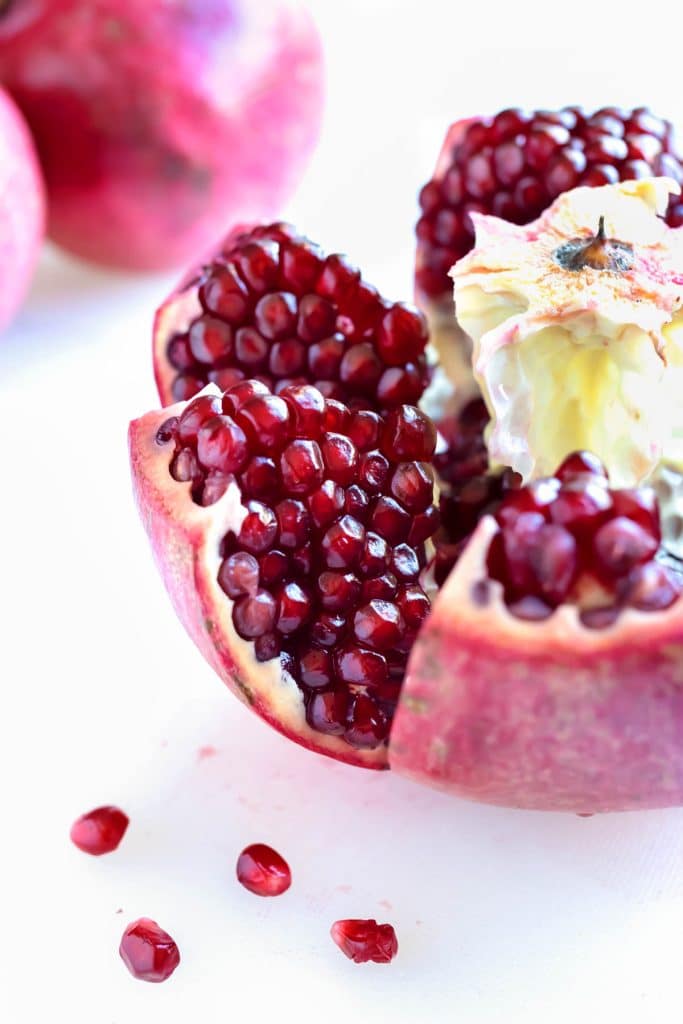
How to Tell if a Pomegranate is Ripe (5 Signs)
When you’re standing in the grocery store staring down a pile of pomegranates, here’s exactly what to look for so you bring home a juicy, ruby-red beauty every time.
1. Color
A ripe pomegranate has rich, deep red skin—not pale pink. A few darker spots are totally fine (they’re actually a good sign of sweetness!). Just avoid ones with any green patches, since that means they were picked too early.
2. Shape
Skip the perfectly round ones! Ripe pomegranates have a slightly flattened, boxy shape where the sides look a little squared off. As they ripen and fill with juice, the skin stretches and the natural ridges show more.
3. Weight
Go ahead and toss a few in your hands. The heaviest one wins! A ripe pomegranate feels heavy for its size—that means it’s packed with juice. If it feels light or airy, it’s probably dried out inside.
4. Sound
Give it a tap! A ripe pomegranate will sound dense and metallic, almost like tapping on a full drum. If it sounds hollow, it’s not ripe yet (or worse—dried out!).
5. Skin Texture (The Fingernail Test)
The skin should feel firm and tough—not soft or squishy. Light surface cracking is actually a good sign (it means the seeds are bursting with juice). Try scratching it with your fingernail: if it barely dents, it’s ripe and ready.
Once you’ve found the perfect pomegranate, give it a quick once-over and avoid any that feel mushy, smell fermented, or have mold around the crown. Otherwise, you’re good to go!
Delicious Recipes that use Pomegranates
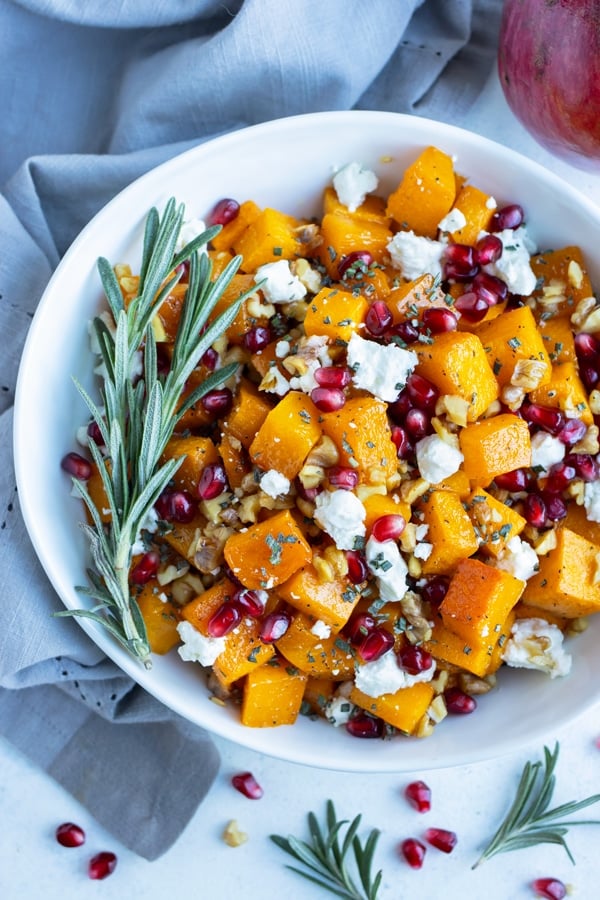
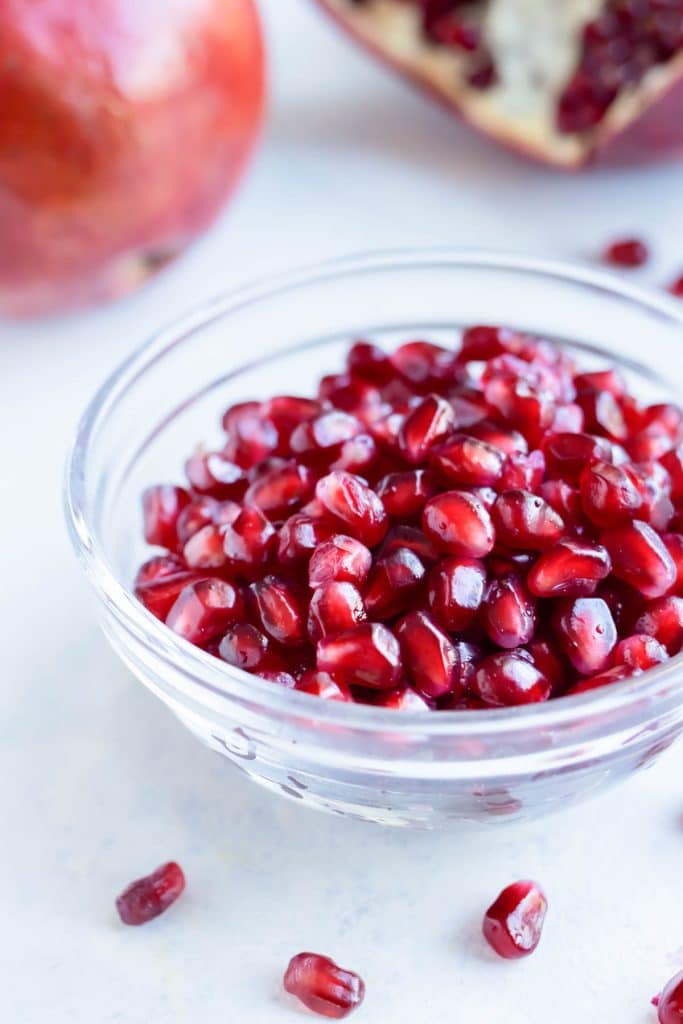
They taste incredible in salads like this Massaged Kale Salad or Chopped Kale Salad.
I also love topping my soups with them, especially this Roasted Butternut Squash Soup or Creamy Pumpkin Soup for something a bit warmer.
And you can never go wrong pairing them with roasted veggies like in this Roasted Butternut Squash with Goat Cheese and Roasted Sweet Potato Cubes!

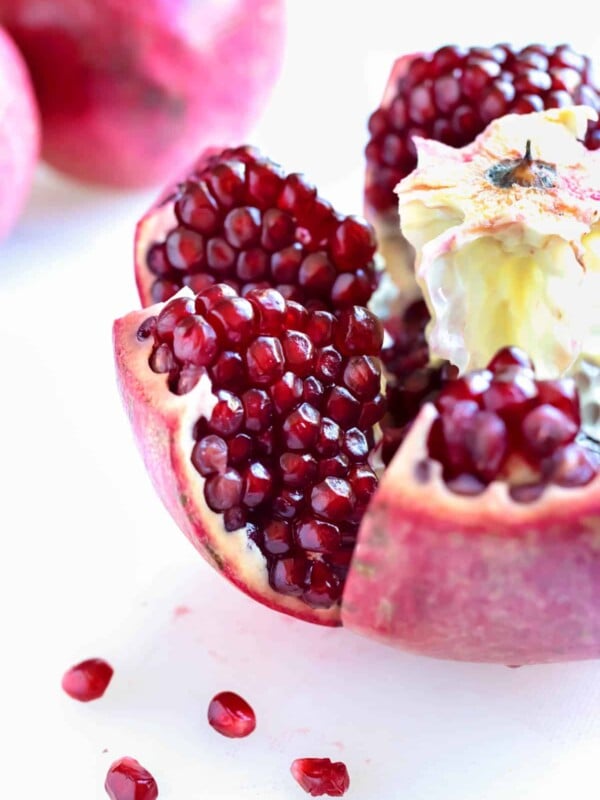

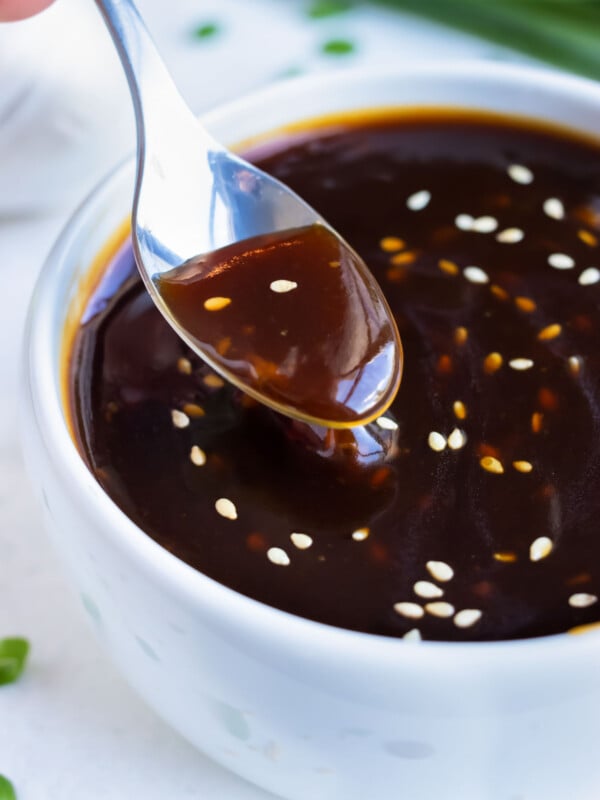
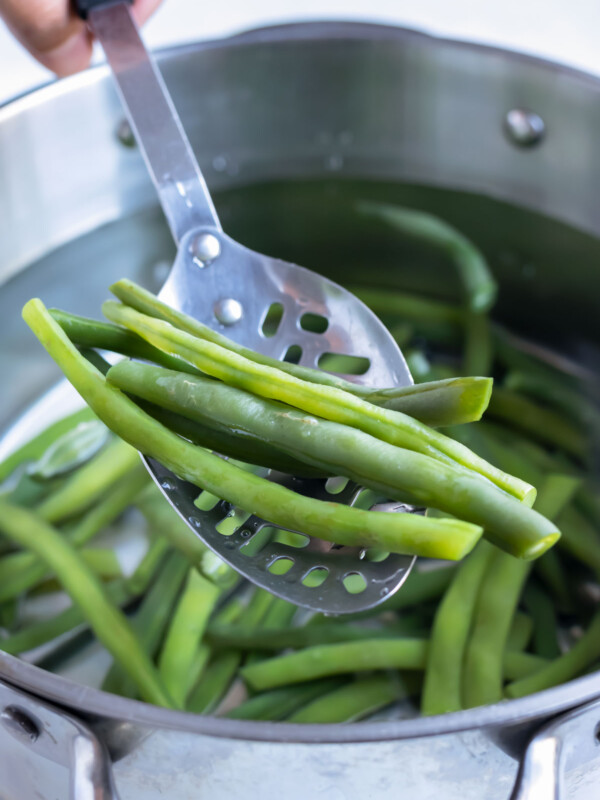

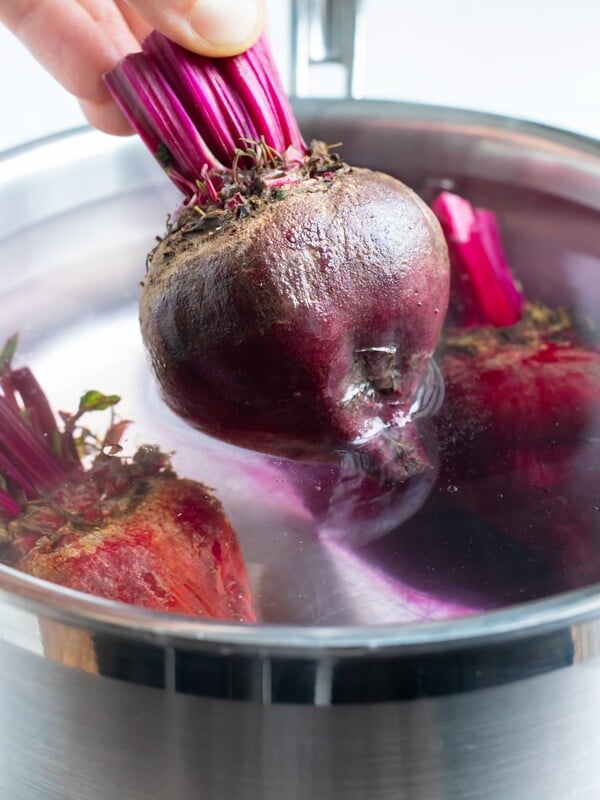
Great tips on picking the perfect pomegranate—love knowing how to get the juiciest fruit! For a naturally sweet touch in recipes, I also use a healthy alternative to maple syrup: https://kodiakcakes.com/collections/syrups
Thanks for leaving a comment, Shawn!
Excellent content on pomegranates! Thank you so much for sharing your knowledge.
Thank you, Jonathan! I’m so glad you found it useful.
Thank you for the great pomegranate tips. Happy pomegranateing this harvest season
You too!
Thanks so much for the info!
You’re so welcome!
Useful information on pomegranates
Thank you
I’m so glad you enjoyed this information!